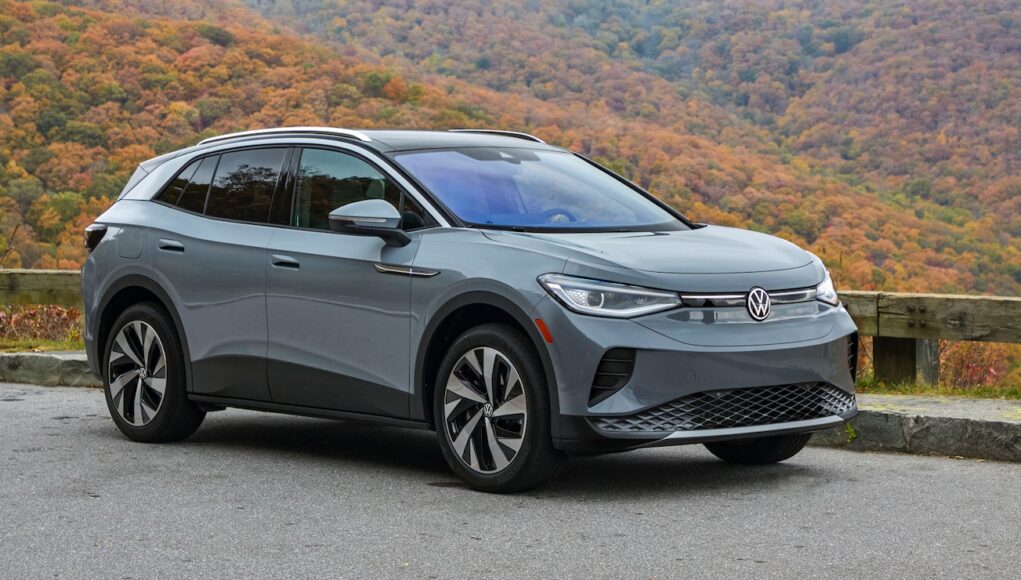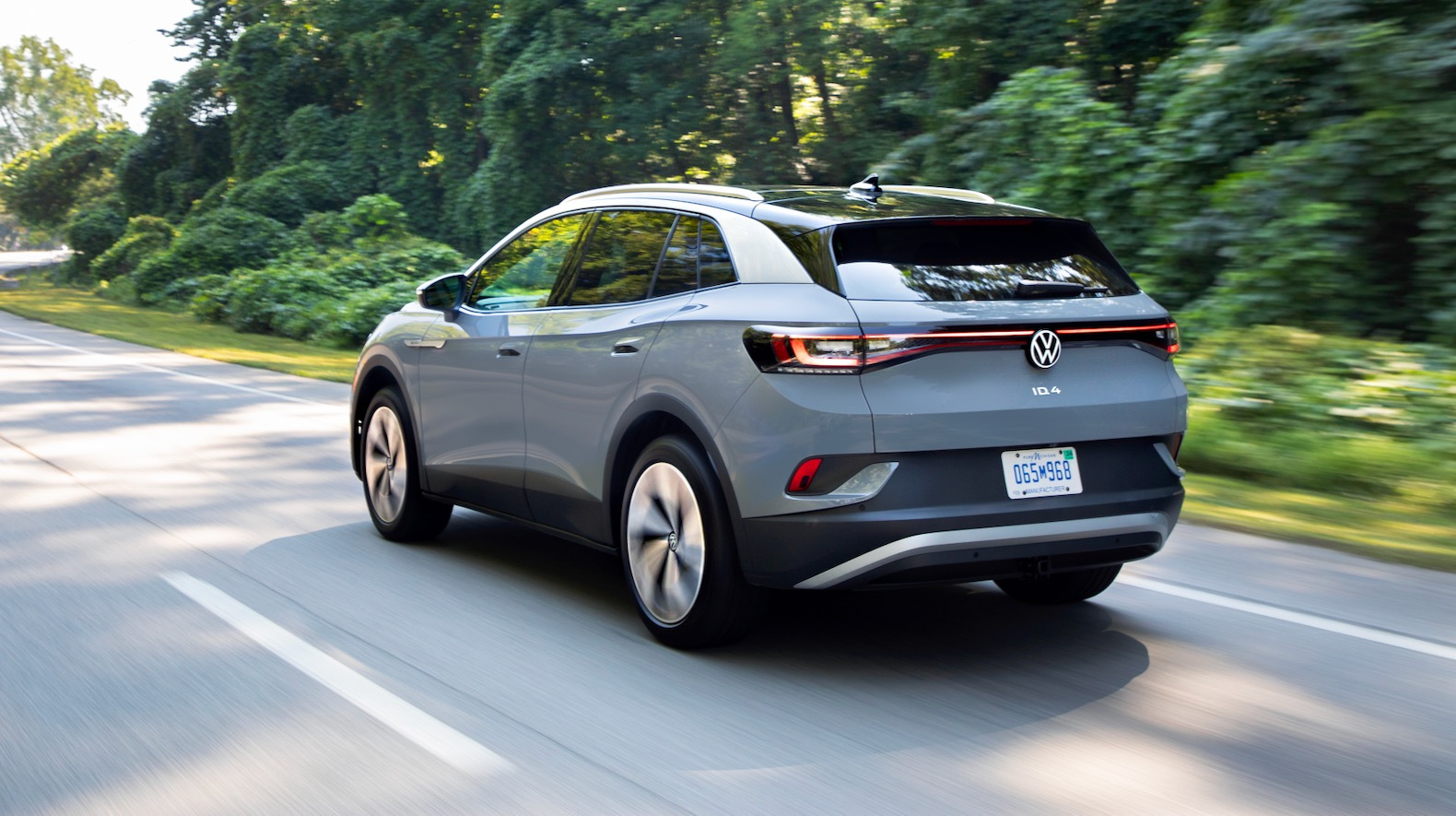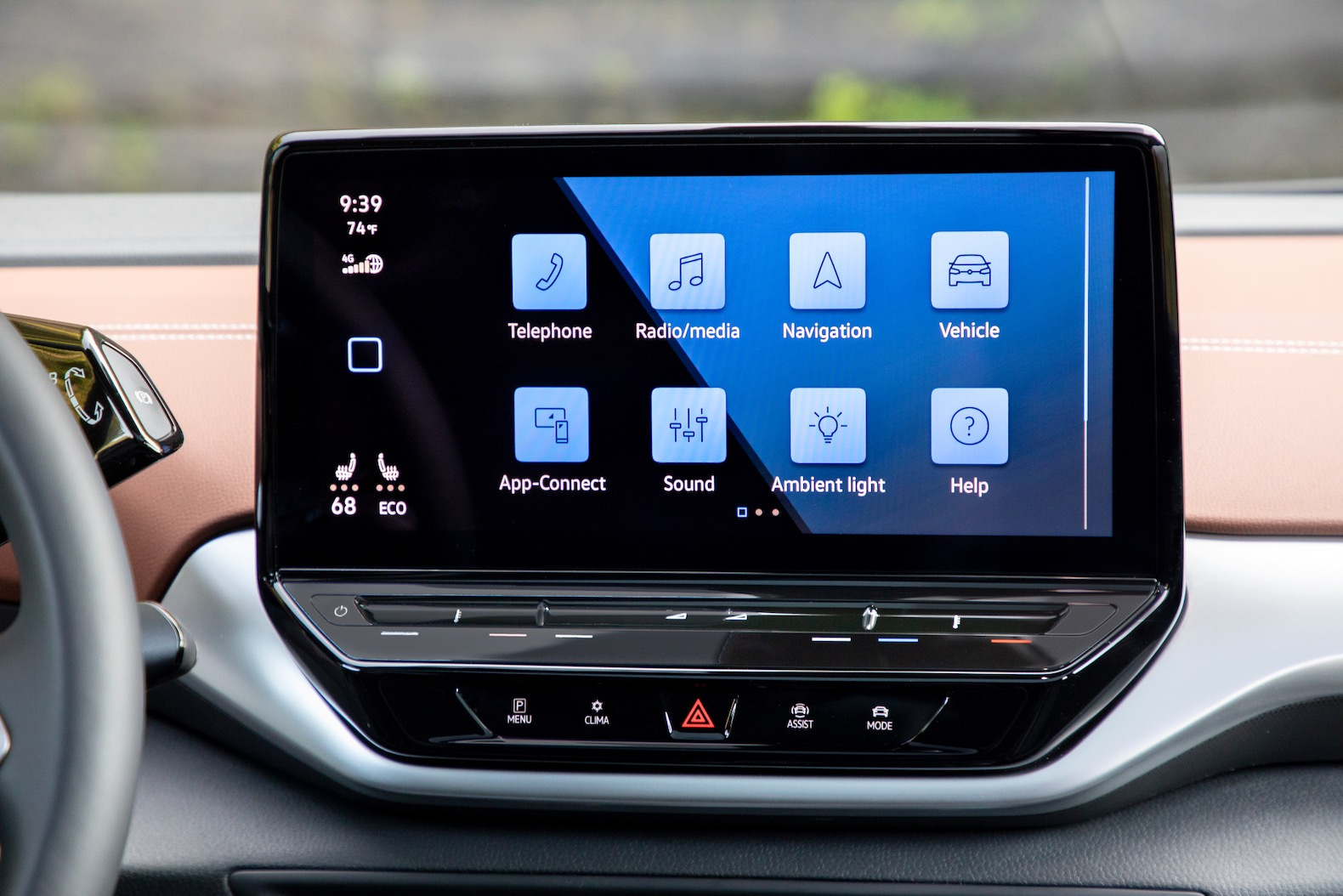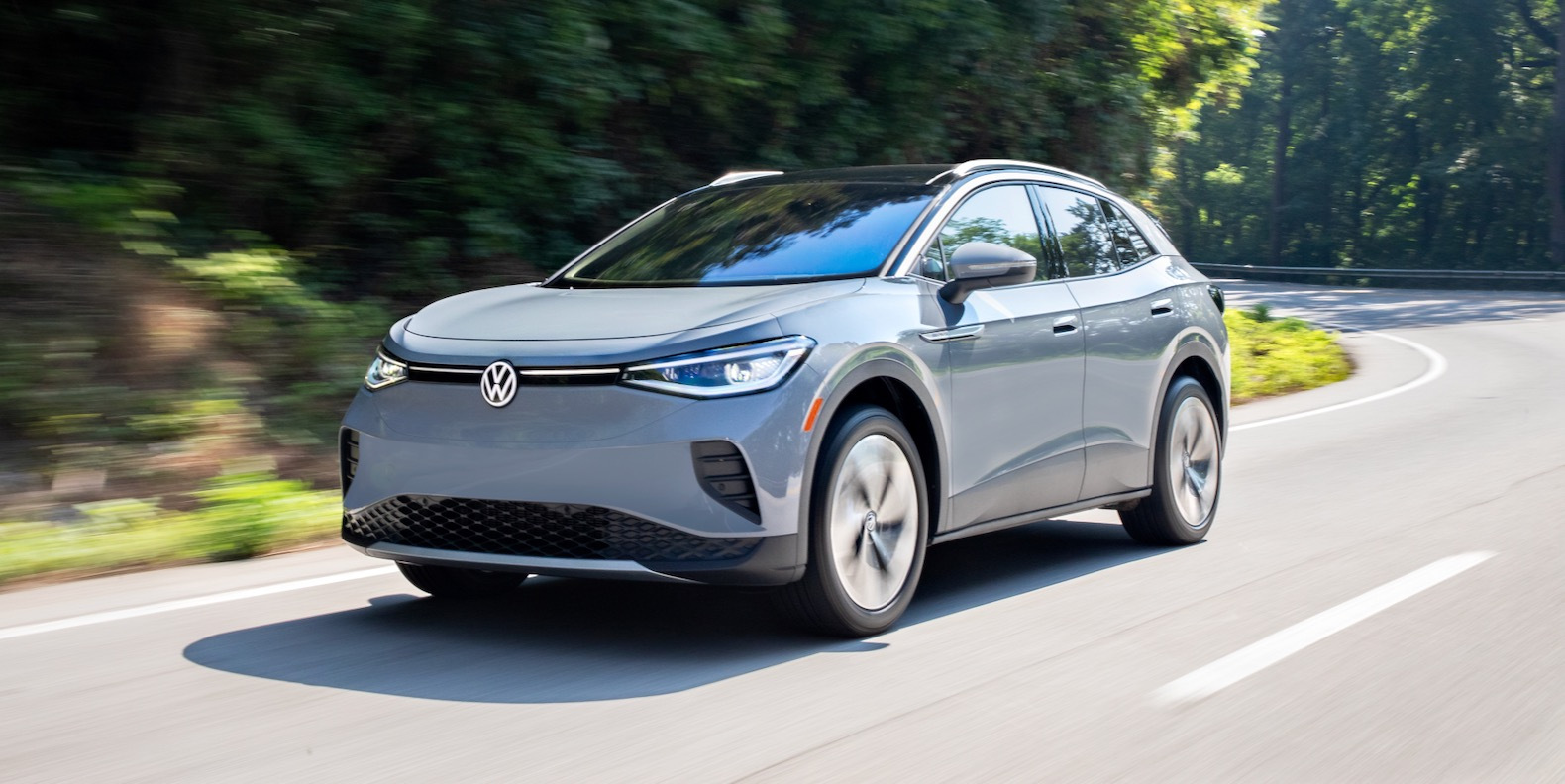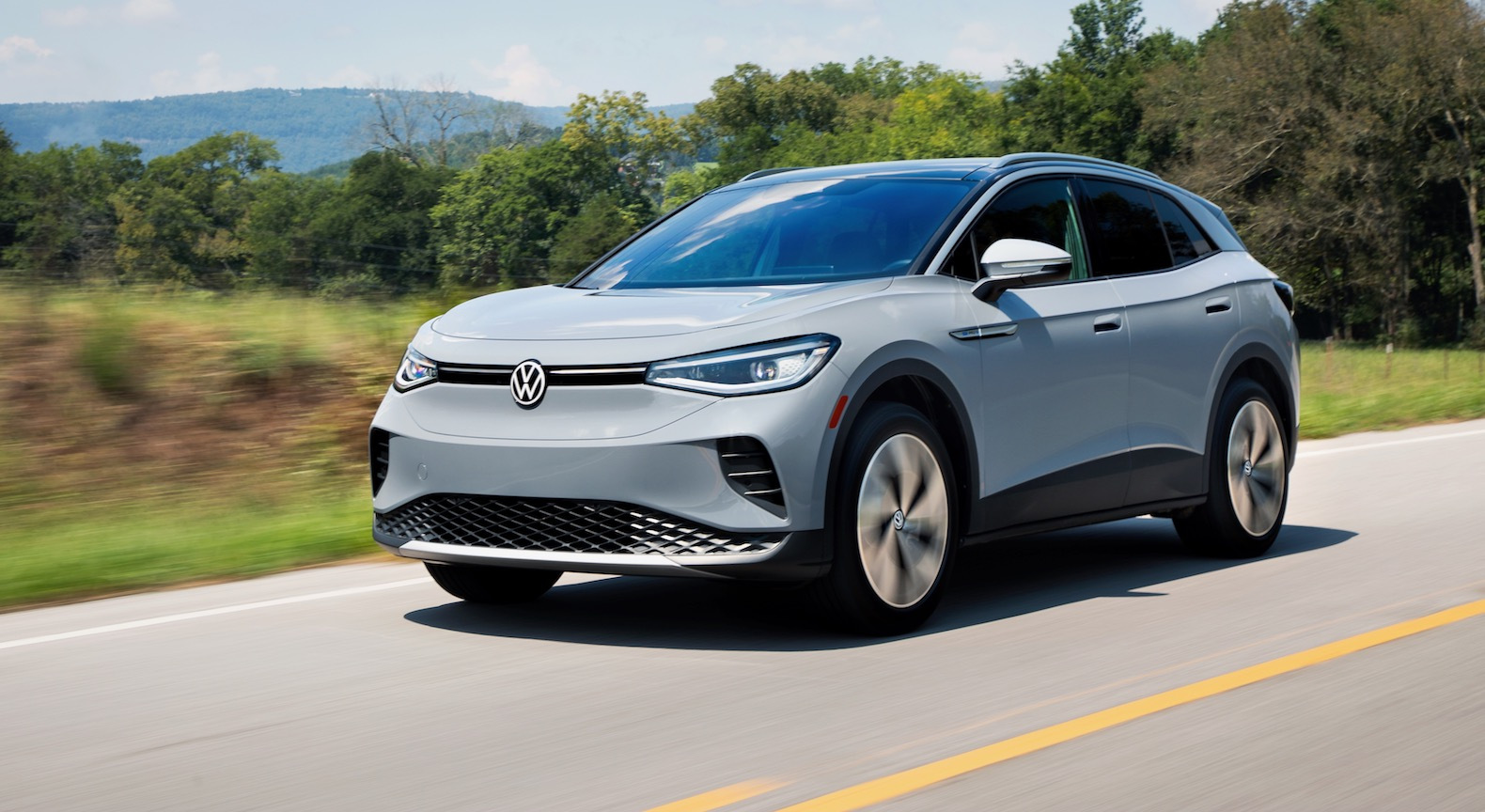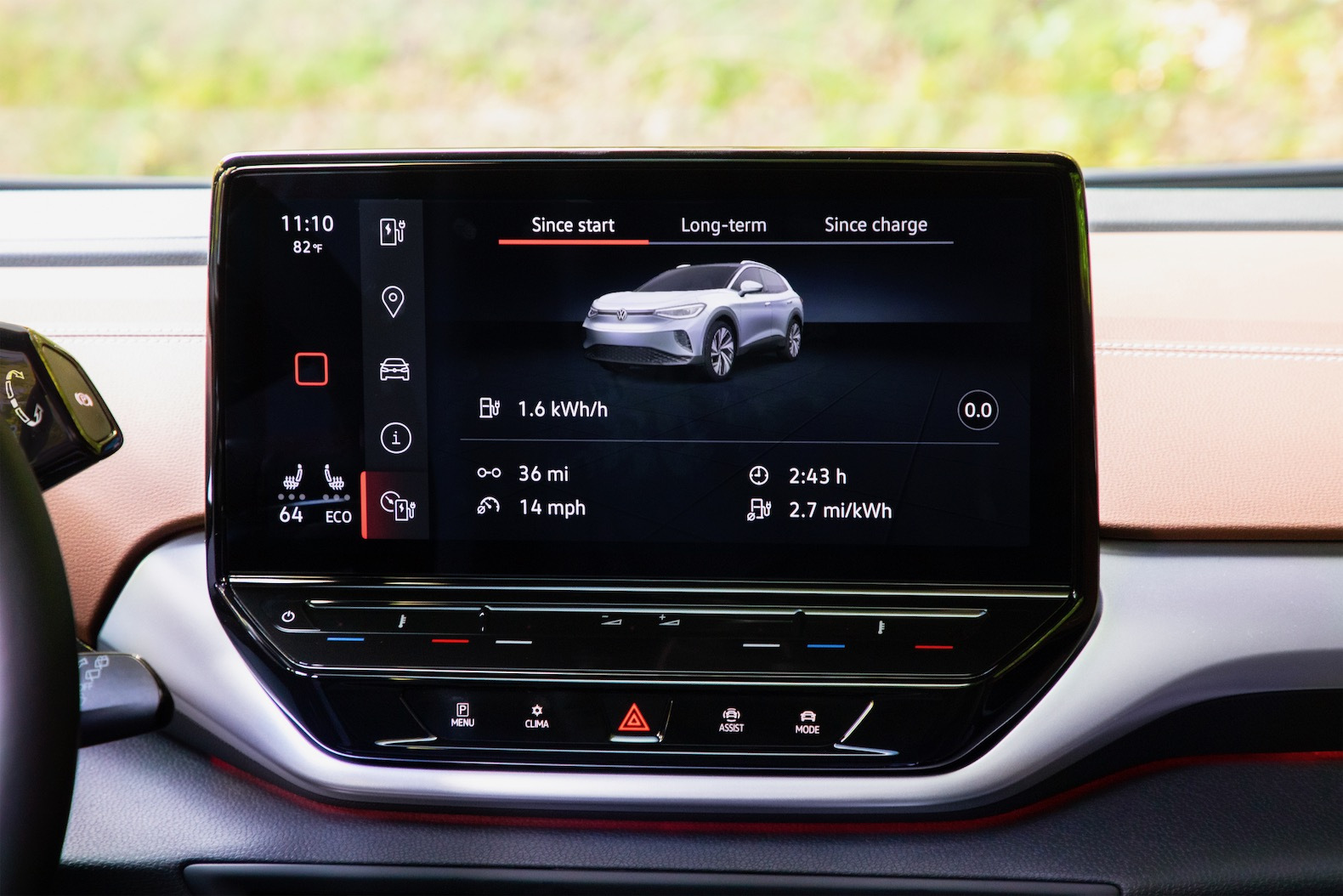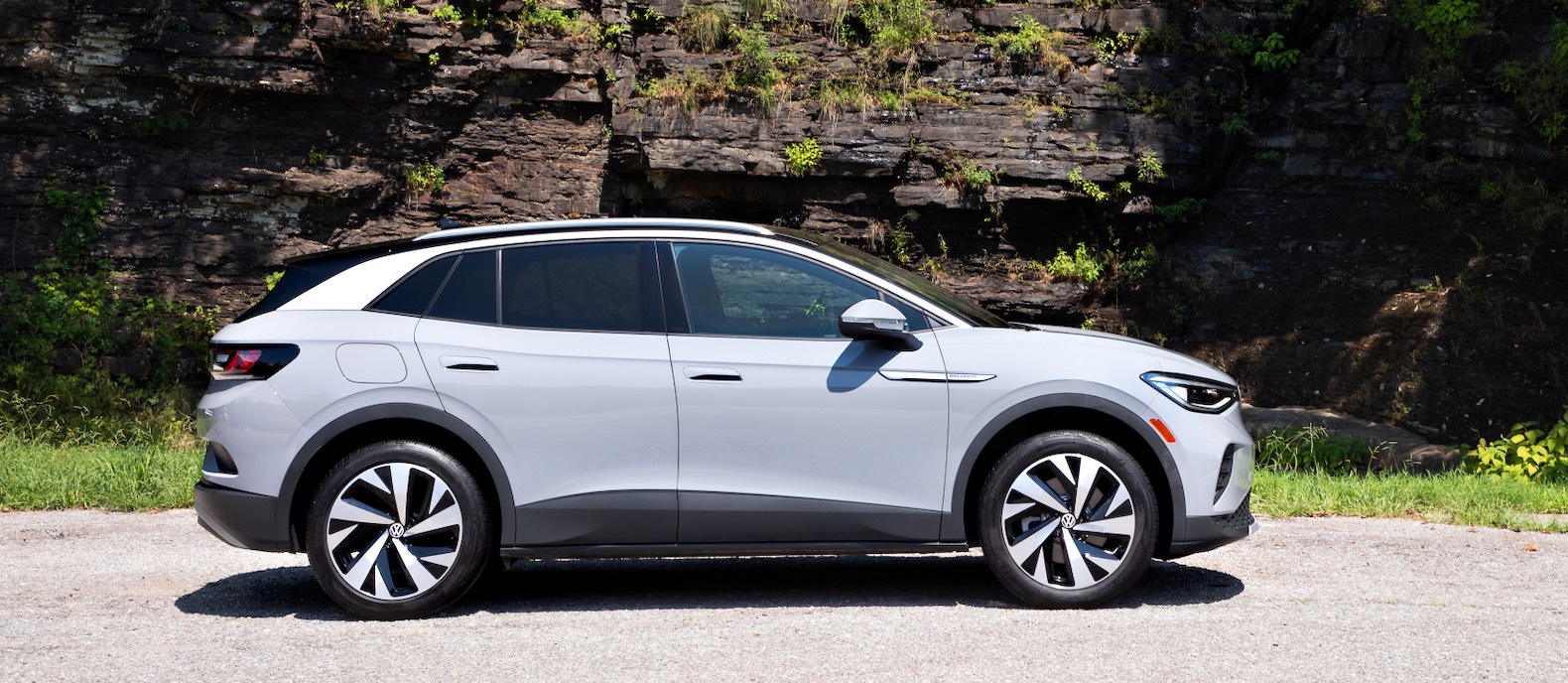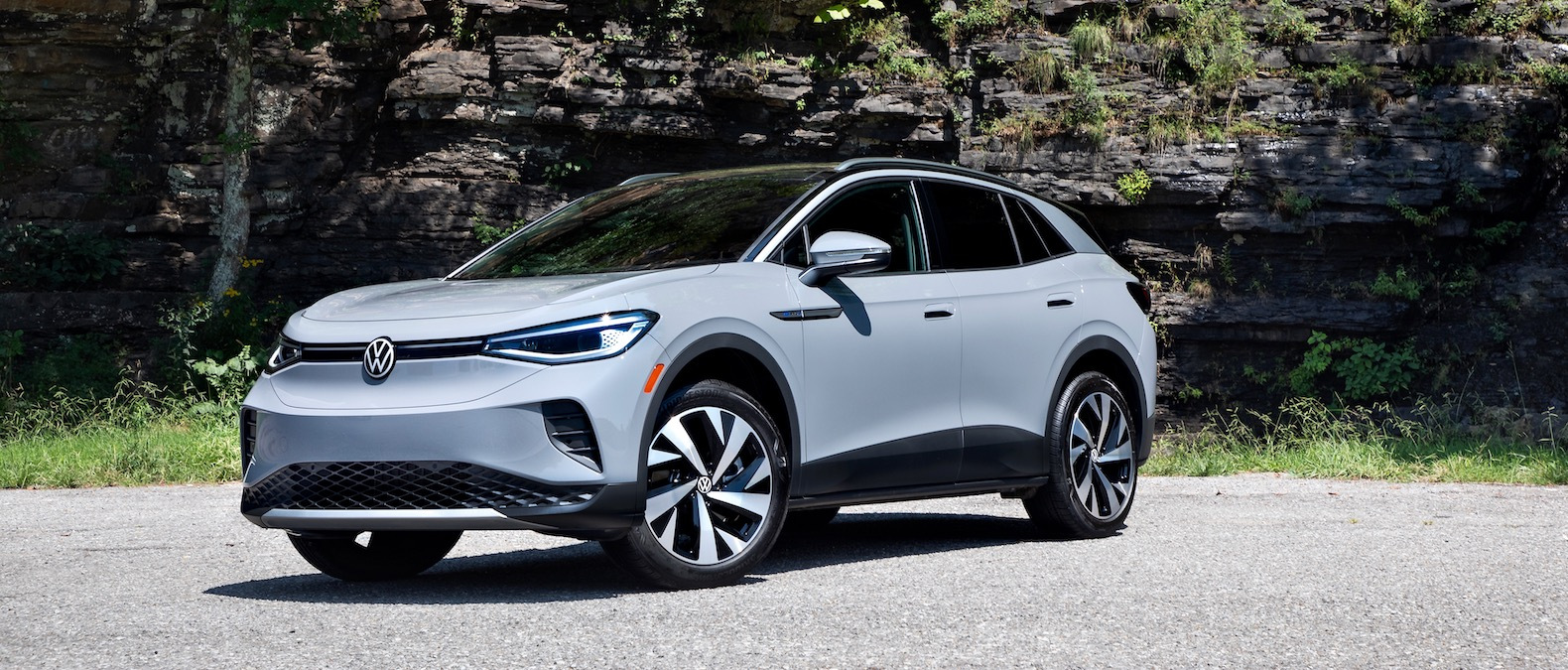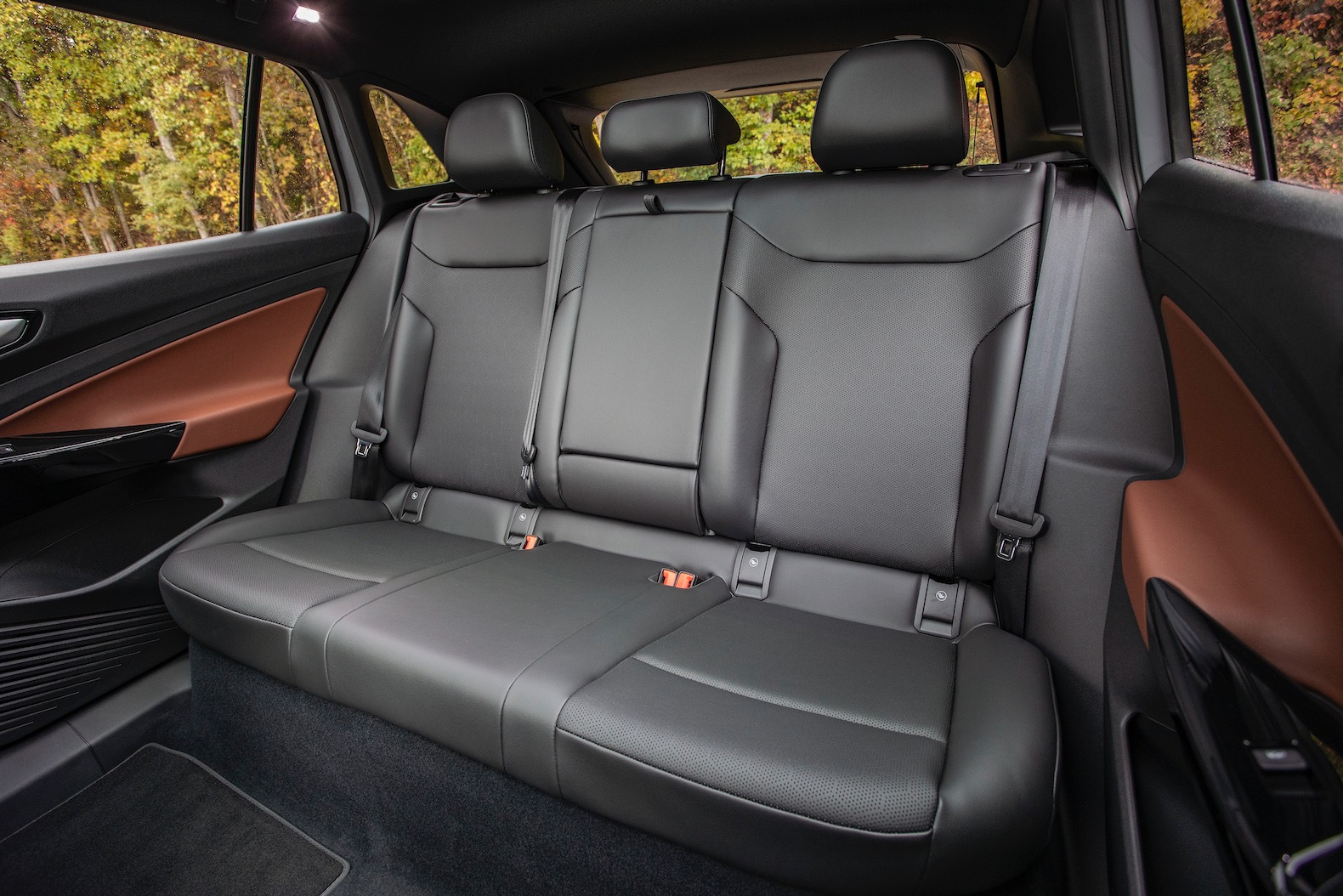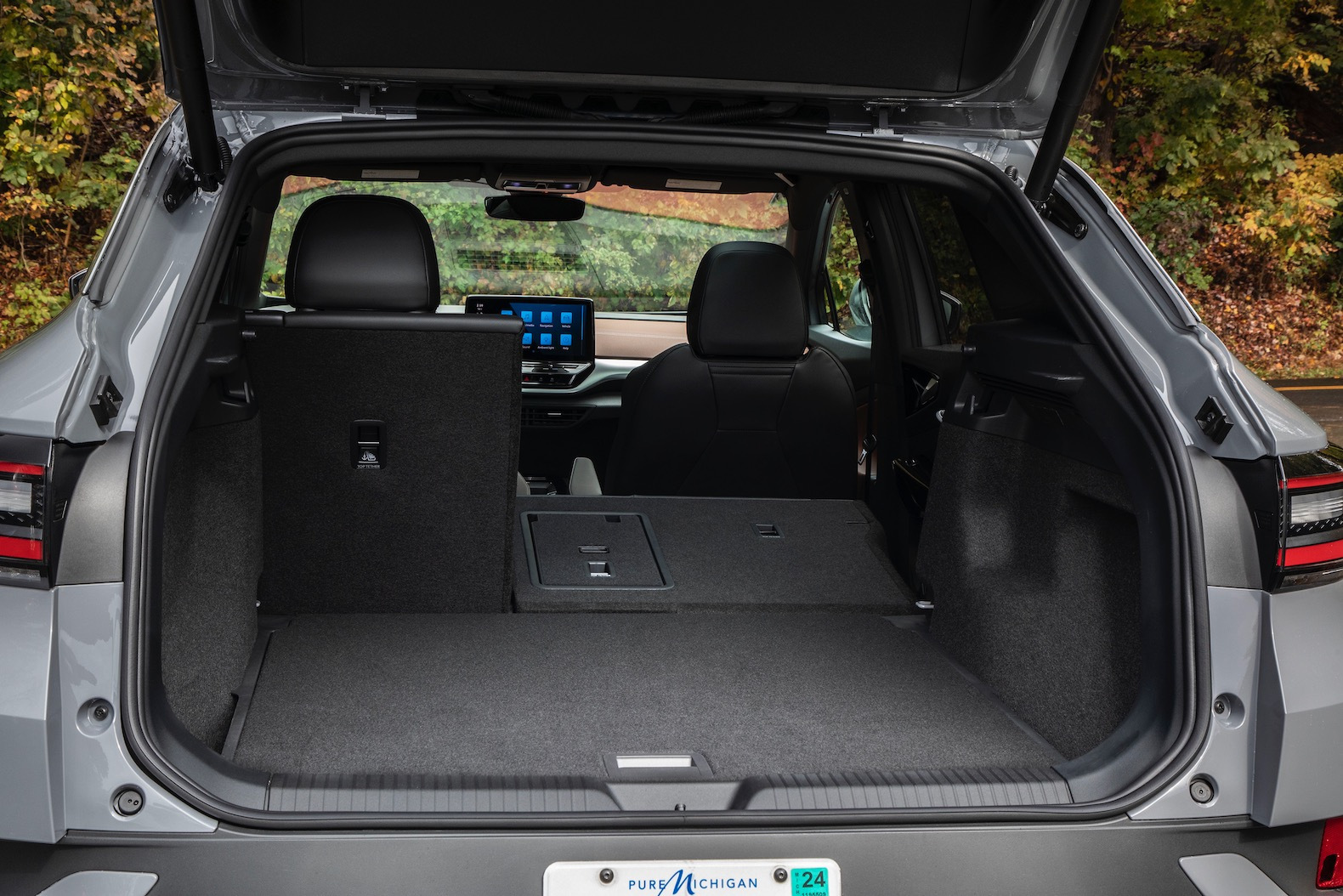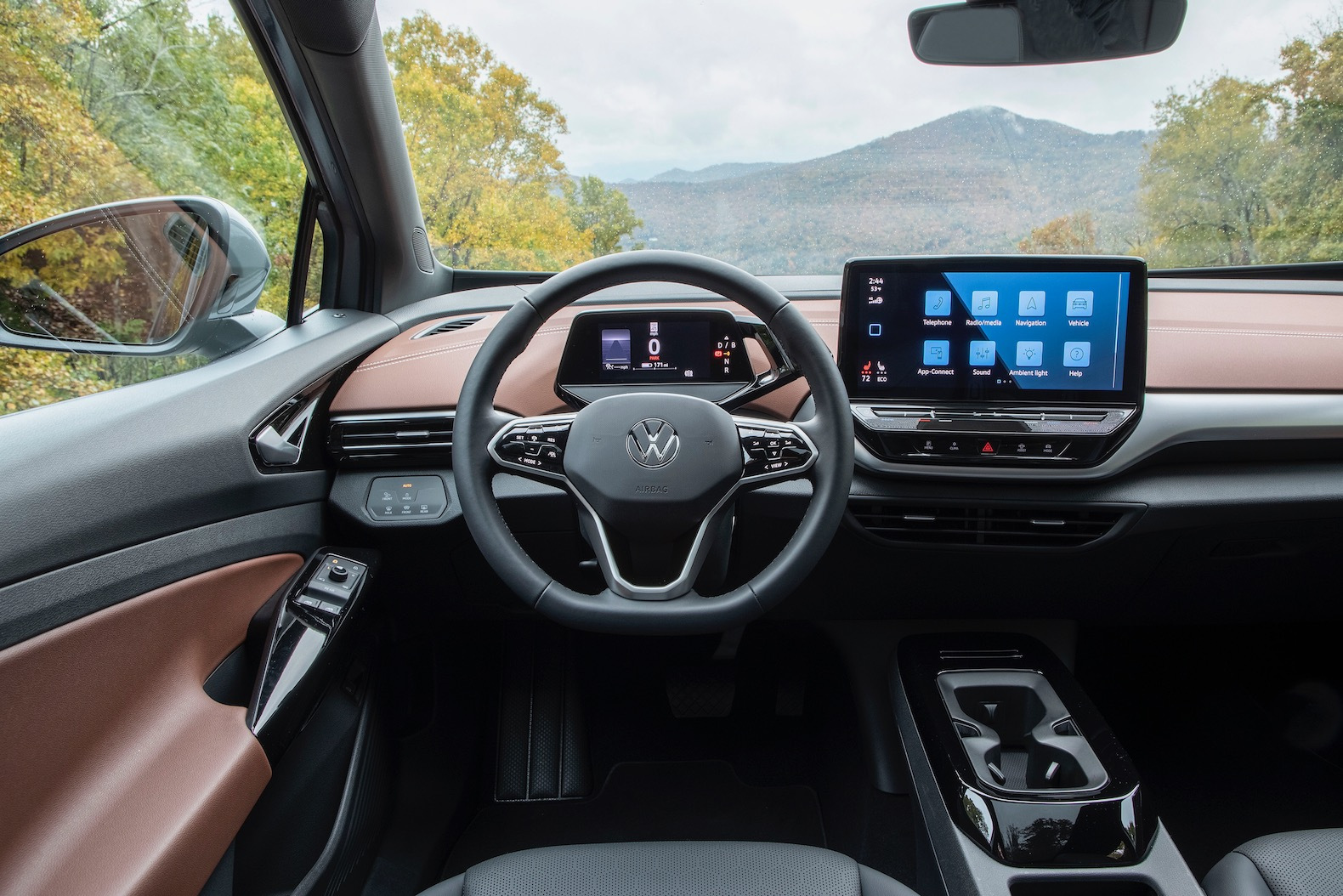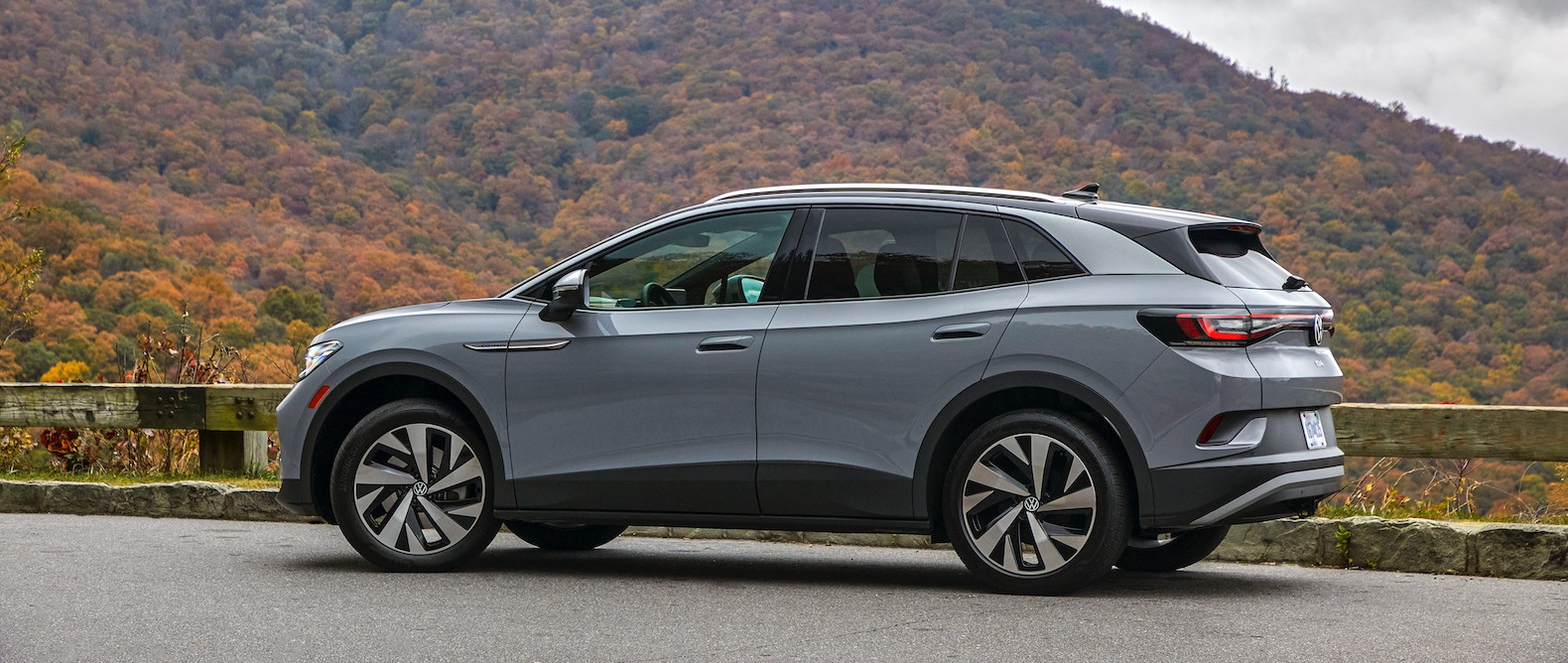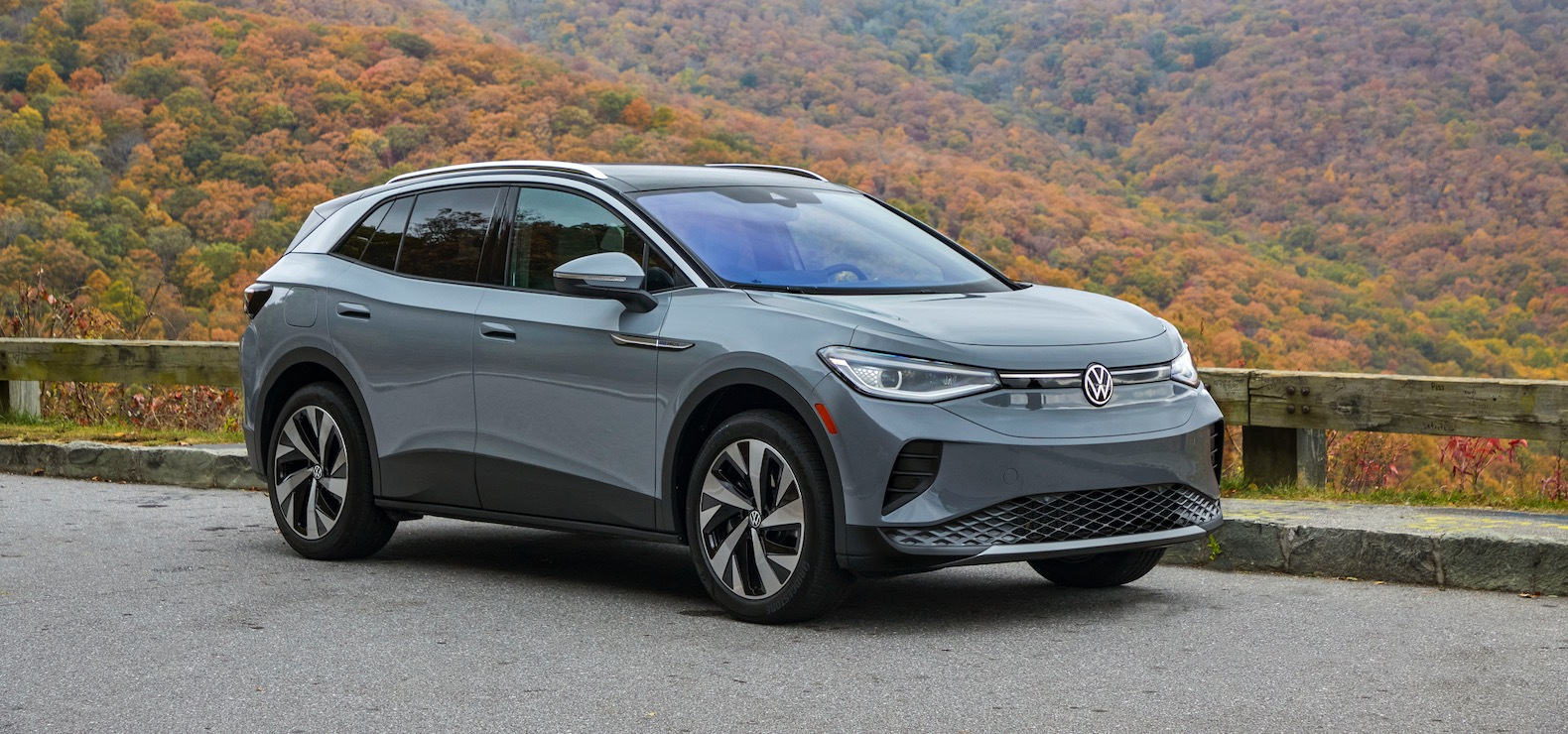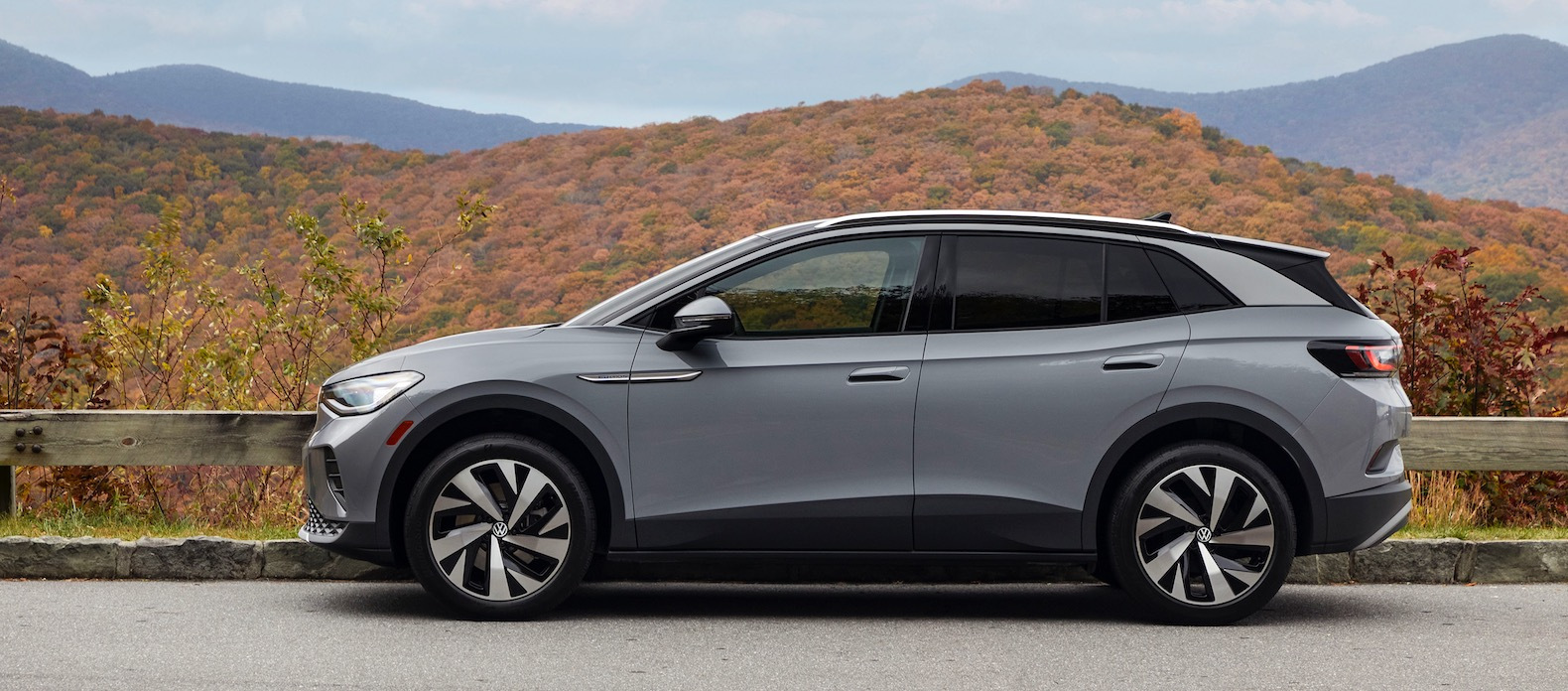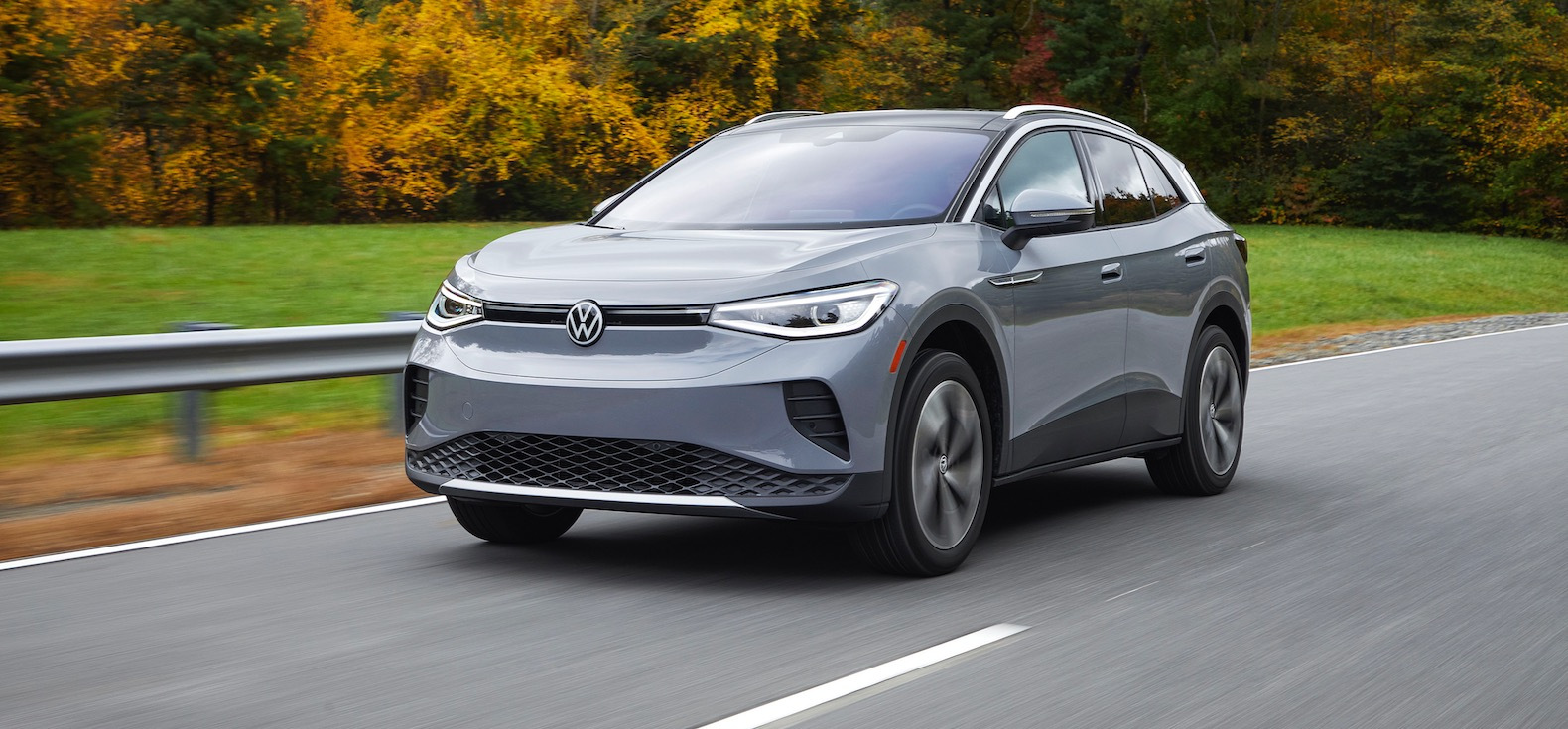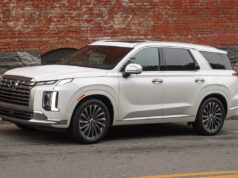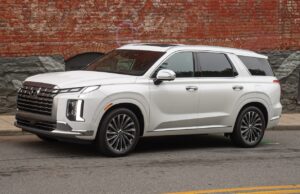The 2021 Volkswagen ID.4 gives families the right formula for saying farewell to tailpipe emissions. The ID.4 is a fully electric compact crossover with space for up to five and a range of up to 250 miles. The ID.4 compares to the Tesla Model Y and Ford Mustang Mach-E, but it’s priced lower to compete with bestselling compact crossovers such as the Honda CR-V, Toyota RAV4, and Subaru Forester. The 2021 Volkswagen ID.4 offers a refreshing design supplemented by innovative lighting, a comfortable, surprisingly spacious interior, a solid set of active-safety features, and enough driving range to make road trips viable.
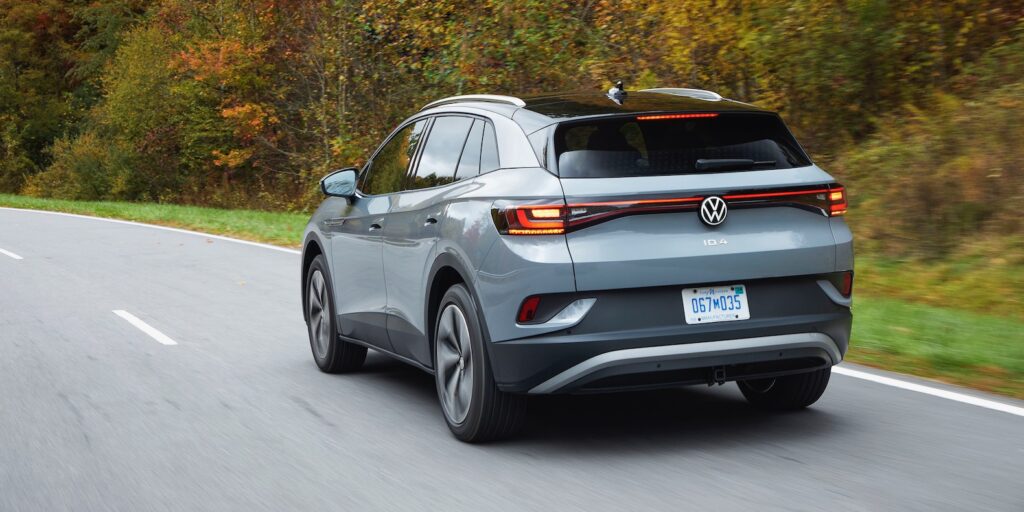
You won’t find a gasoline-fueled ID.4; it’s the first of a generation of mass-market battery electric models created as a direct result of the Volkswagen diesel scandal, built on a platform conceived for millions of affordable EVs that will also turn a profit for the German automaker as it pivots away from gas and diesel. Everything from the trim and wheels to the door handles and switchgear represent a new, clean-slate approach, and the cabin is bathed in multi-color ambient light.
The ID.4 is good looking, in a ubiquitous way, but not by any means emblematic of what a radical step in VW’s evolution it represents. That’ll come later, with the electric revival of the Microbus, signaled by the ID Buzz concept and expected in two years. The ID.4 is well shaped and styled by avoiding the homely proportions that often accompany crossovers its size. There’s more curvaceousness in the sheet metal than in other VW SUVs, plus a bit of ruggedness signaled in the rubberized cladding around the wheels and throughout the lower body, although the ID.4 is meant for suburban streets, not off-road trails.
Dual-motor all-wheel drive versions give the ID.4 a perkier, more confident feel, but its ride is prioritized for comfort. The 2021 VW ID.4 offers quick acceleration in its dual-motor all-wheel-drive form, with a great ride-and-handling balance. In single-motor rear-wheel-drive versions, it’s powered by a permanent-magnet motor at rear wheels, making 201 horsepower and 229 pound-feet of torque. Dual-motor all-wheel-drive models add an asynchronous motor at the front wheels, delivering 107 hp and 119 lb-ft of torque; with the rear motor for those models the same, they make a combined 295 hp and 339 lb-ft.
Underneath the ID.4 is a suspension layout much like other crossovers, including struts in front and a multi-link layout in back. Both models have a very tight turning radius (33.6 feet, or 36.4 feet with AWD). Underneath the cabin is a liquid-cooled battery pack, with its 288 lithium-ion pouch cells divided into 12 modules and weighing 1,067 pounds. VW makes 77 kwh of the battery pack’s 82 kwh available as usable capacity. The ID.4 can be charged to full with a 240V home charger (up to 11 kw) in as little as 7.5 hours, or it can hit 135 kw on CCS-format DC fast-charging, allowing a 5%-to-80% charge in just 38 minutes.
Single-motor versions can dash to 60 mph in a respectable 7.5 seconds, which is about on par with gasoline crossovers but slower than nearly all rivals. Dual-motor AWD versions get to 60 mph in just 5.4 seconds, but they’re also not shockingly quick; it’s a difference you’ll feel the most at two-lane passing speeds. The dual-motor layout also adds to the ID.4’s graceful handling with Sport mode revealing impressive poise that you might not expect based on Comfort-mode lolling. Eco, Comfort, Sport, and Custom (and Snow, with AWD) modes offer different accelerator responses and subtle steering changes, but overall the precise steering feel in the ID.4 lineup is a joy, and the ID.4 has a balanced feel on tight on-ramps and twisty backroads.
The shifter’s ‘B’ mode trades the easy-coasting feel of ‘D’ (Drive) for a little more regenerative braking when you lift off the right pedal. Early test cars we drove exhibited a “grabby” brake feel in the last few feet of a stop, but follow-ups Lift off the brake and the ID.4 creeps ahead slowly. Two earlier test cars we drove were intermittently grabby in the last few feet of stops; follow-ups with recent AWD versions have not shown this trait.
The entire 2021 VW ID.4 lineup is all-electric and has no tailpipe emissions. Across the full 2021 Volkswagen ID.4 model line you’ll find more than 200 miles of range and no source of tailpipe emissions. The ID.4 is rated at 280 miles in its single-motor, rear-wheel-drive ID.4 Pro version, or 251 miles as the ID.4 AWD Pro. The ID.4 AWD Pro S is rated at 245 miles. In EPA-rated efficiency, those models correspond to 93 to 99 MPGe combined, making it not quite as efficient as the Tesla Model Y or Hyundai Ioniq 5 but considerably better than its VW Group cousin, the larger Audi E-Tron.
The ID.4 has achieved top five-star crash-test results from the NHTSA, as well as the Top Safety Pick+ distinction from the IIHS with exceptional outward visibility and automatic emergency braking standard. The IIHS notes that the headlights in the base Pro earn “acceptable”, pointing to some limitations of the low beams, while the adaptive LED reflector headlights in the Pro S version achieve a top-tier “good” result. You don’t have to opt for the top version of the ID.4 to get all the safety features. In addition to six airbags, the whole model line includes automatic emergency braking with pedestrian detection, active lane control, blind-spot monitors, and road-sign recognition. Parking sensors are also included, as well as automatic high beams, and a rear-traffic alert feature.
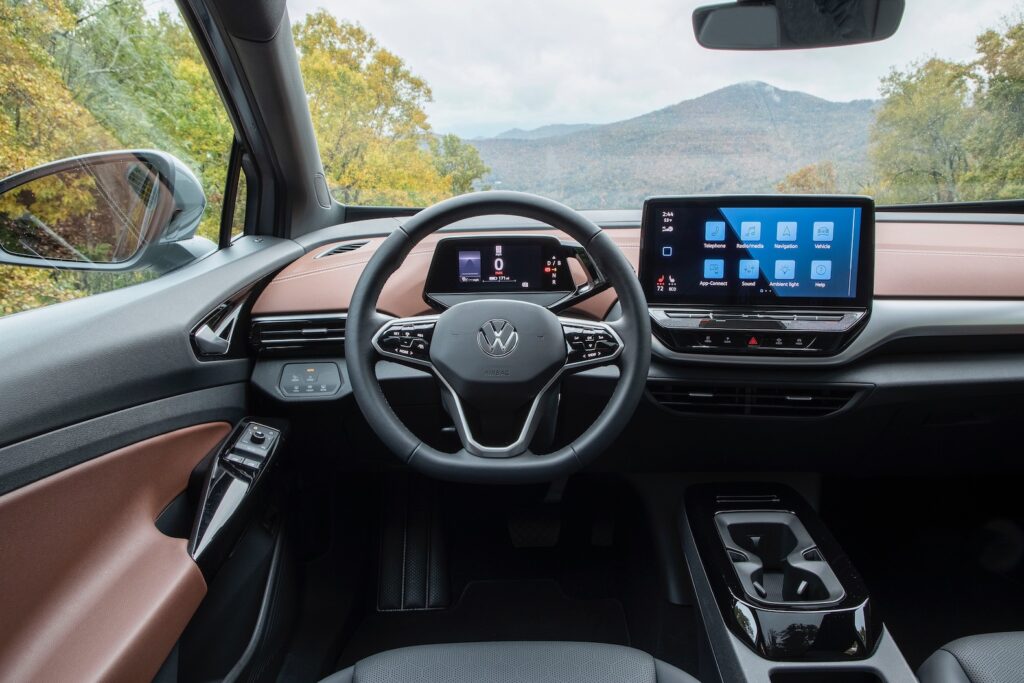
The ID.4 cabin is quiet and comfortable, with more passenger and cargo space than the exterior suggests. One of the advantages of vehicles designed to be fully electric from the start is that they can package the whole vehicle in a much more passenger-friendly way. The 2021 Volkswagen ID.4 doesn’t at all squander this potential, although it does things a little differently than other dedicated EV models on the market. The ID.4 presents in this category as if it were in a bigger size class, with impressive passenger space, an ideal seating position and sightlines, and good ride comfort, plus what we think is the most comfortable back seat among compact EVs. Excellent noise insulation and, from what we can tell so far, impressive materials and general fit-and-finish, altogether make the ID.4 a model that will surprise and delight when you put yourself, your kids or pets, and your stuff in the ID.4.
One surprise to some might be that the ID.4 doesn’t have a front trunk, or “frunk”, in the era of Tesla, almost expected in an EV. VW has instead packaged the onboard charger, climate control system, and other components there, and used it to free up the footwell and cabin space in front, making the feel airier. The ID.4 does a lot of things right with climate comfort, too. The whole lineup includes a heated steering wheel and toasty heated seats, and the climate system allows you to choose the driver specifically to save energy. With the Car-Net app, you can remotely precondition the cabin while it’s still plugged in, so as not to use up driving range.
As gimmicky as the ID.4 might seem if the interface is your first introduction, it’s down to business when it comes to space and comfort. The ID.4 is just slightly shorter in length and height than the Toyota RAV4 and Honda CR-V, yet inside it can feel more spacious. The center console is very deep and, with the door bins, provides places for various small items. There’s a pass-through for skis, and the rear seatbacks fold forward to a nearly flat space, expanding the already great 30.3-cubic-foot space to 64.2 cubic feet. The cargo floor also folds and slides forward to allow access to a separate “hidden” compartment below.
Fundamentally, the 2021 Volkswagen ID.4 is a tech-savvy EV with an affordable price. A strong warranty and three years of free Electrify America road-trip fast-charging headlines add a lot of value. Feature content, especially comfort and safety items, is excellent. From the infotainment screen to the dash and steering-wheel controls, to a new light-and-color alert system, the ID.4 has a completely different interface compared to other contemporary VW models. Tactile buttons have been retired in favor of capacitive surfaces on the steering wheel and dash, supplemented by voice controls.
The touchscreen itself; 10.0-inch in base Pro models, 12.0-inch in Pro S versions, is high in the line of sight and looks great. But in real-world responsiveness, it’s a sluggish affair, with menus that don’t always respond consistently. The ID.4 is the first model in the VW family capable of over-the-air updates, so the capability should be there to improve the performance of the interface. VW says that an OTA update it plans to push will bring an auto-hold feature for the parking brake, a higher peak charge rate of around 135 kw, and Plug and Charge convenience that effectively takes the payment step out of fast-charge stops. It also includes a strong 4-year/50,000-mile vehicle warranty and 8-year/100,000 battery warranty.
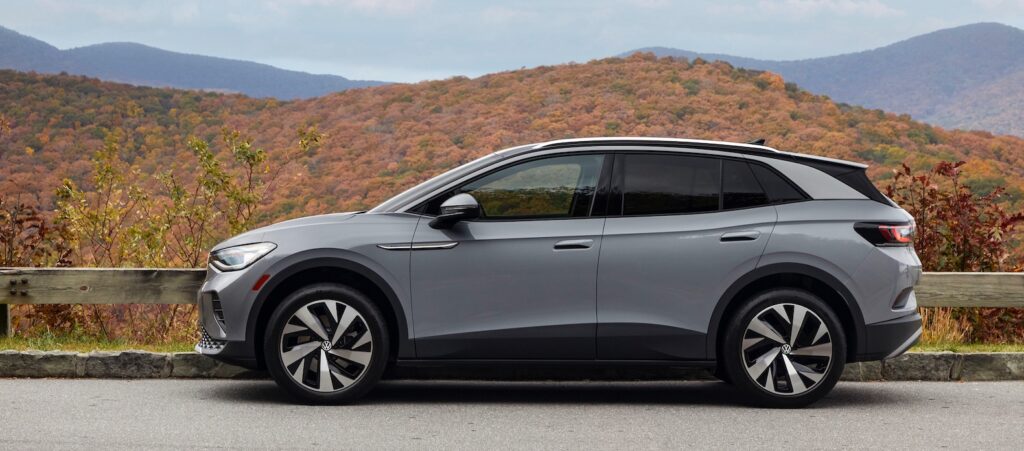
At $41,955 in RWD form or $45,635 in AWD form, the ID.4 Pro is the one that value-minded shoppers should focus on. It comes loaded with safety features plus a lot of comfort and convenience items. Cloth seats, dual-zone climate control, rain-sensing wipers, adaptive cruise control, a wireless smartphone charging pad, heated front seats, heated mirrors, and a heated leather-wrapped steering wheel are included, and the AWD version of the Pro also adds a heated windshield. The 10.0-inch center touchscreen includes wireless CarPlay and Android Auto, but you may notice that AM radio is missing.
One of the coolest features in the ID.4 is an ID Light alert that uses a dynamic, directional band of light, color-coded and zooming across the dash, to draw your attention to critical pieces of info, like that turn you’re about to miss. That’s on top of the Pro S model’s adaptive headlights, panoramic glass roof, power tailgate, power mirrors, puddle lamps, 30-color ambient lighting, and bigger 12.0-inch touchscreen. The only option package is called the Gradient Package, and includes bigger 20-inch wheels, two-tone paint (black roof), and silver bumper accents. Top-technology options like a head-up display would make a lot of sense here, but that’s reserved for the ID.4’s Audi Q4 cousin.
The 2021 Volkswagen ID.4 is impressive, purely for what Volkswagen has been able to achieve, giving people what they need at a price they can afford. Maybe that’s the exact modern definition of “the people’s car”. If that’s the case, the 2021 Volkswagen ID.4 is a home run, both on the merits of the ID.4 itself but also for what it represents, the new affordable modern era of transportation that you can live with every day, even on the weekends.

